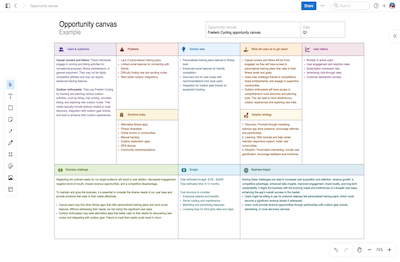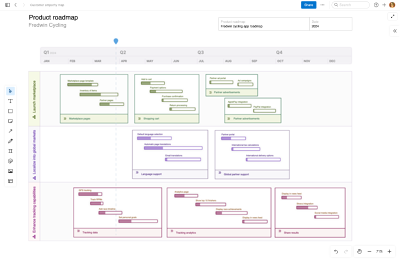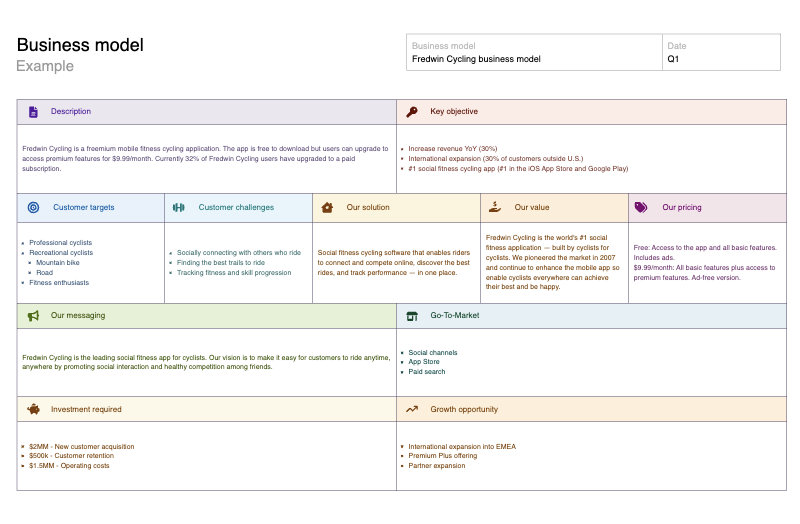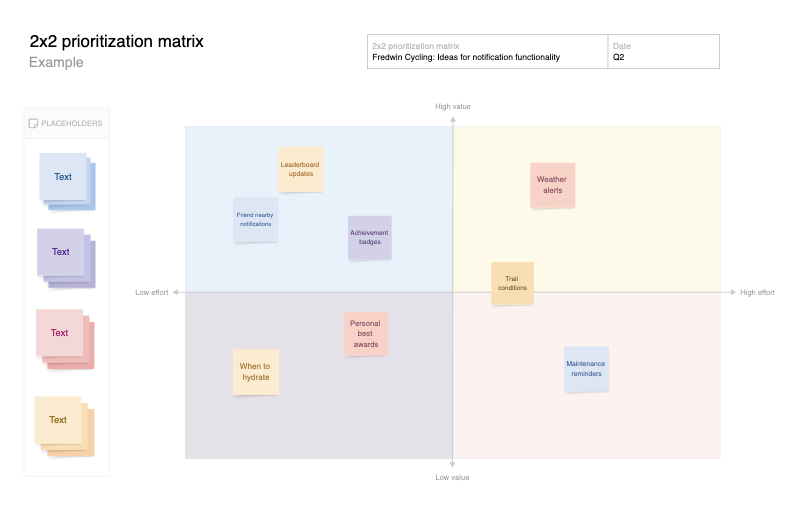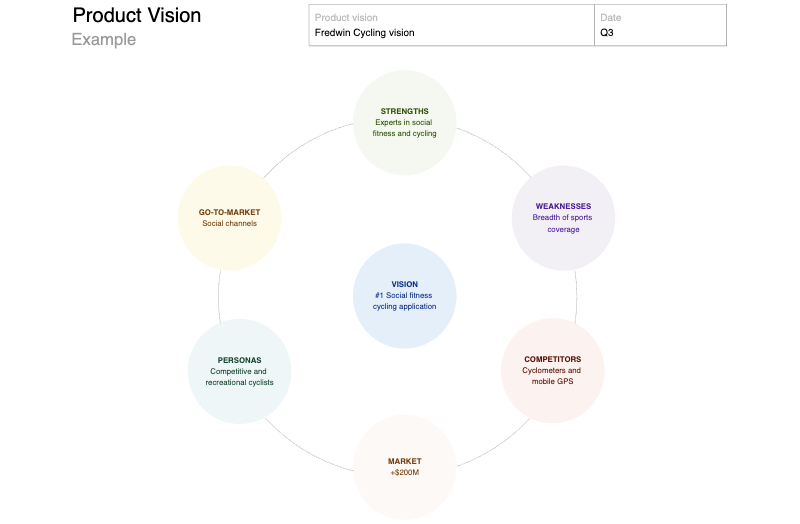OKRs template
Set objectives and key results and measure your progress towards them
Use template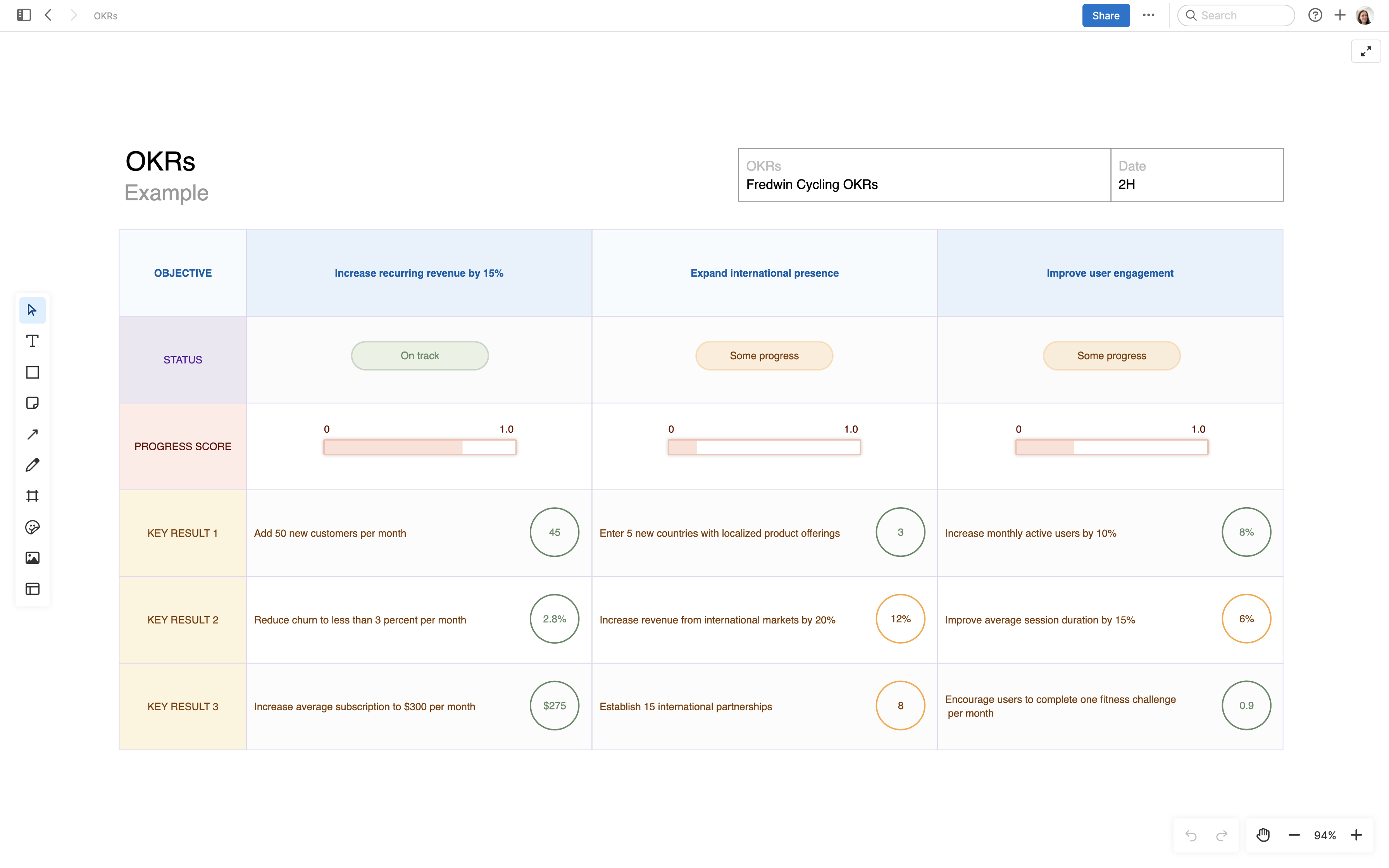
About the OKRs template
Goals are crucial for a winning business and product strategy. Use this OKRs template to lay out exactly what you want to accomplish — so you can create a well-defined roadmap to get there. The idea is to plan what you will achieve (objectives) alongside your measurements for success (key results), making sure each is specific, measurable, and time bound.
Included in the OKRs template
This template includes everything you need to define your objectives and key results:
Configurable table for organizing OKRs
Adjustable status and progress bars
Example for inspiration
Customize the OKRs template to match your needs, and then share your whiteboard with stakeholders so they can align on your objectives. This template also includes the following capabilities to help you do your best work:
Add and rearrange table columns and rows as needed
Collaborate live or asynchronously to define your OKRs
Highlight key information with sticky notes and annotations
Invite stakeholders to provide input and comments
Make your OKRs available as a shared webpage
How to use the OKRs template
OKRs stands for objectives and key results. It is a popular goal-setting framework used by organizations to define and track objectives and their outcomes. Ideally, your OKRs will cascade throughout the organization. This ensures that business, team, and individual objectives align — so everyone works toward the same goals.
Creating an OKR framework is a powerful tool for driving performance, especially when implemented thoughtfully and consistently. Many organizations set OKRs on a quarterly basis, but annual OKRs are also used for long-term goals. Review your OKRs from a top-down and bottom-up perspective to make sure everything ties together. Then, make your OKRs transparent to foster a results-oriented culture where everyone is invested in making meaningful progress.
Best practices
Establish OKRs at each level of your organization to keep everyone focused on what matters most.
Define your objectives: Start by identifying the high-level objectives or outcomes you want to achieve. Each objective should be inspiring, ambitious, and provide clear direction for what you want to accomplish within the given time frame.
Set key results: Aim for 3-5 key results per objective. Each one should be quantifiable and reflect the desired outcome — so you can prioritize the work that needs to get done and determine success.
Measure progress: Regularly review your performance against the key results. Capture specific metrics to see if your objectives are on track and adjust the progress bar to reflect how you are doing overall.
Foster transparency: Share your OKRs with leadership, teams, and individuals. Hold regular check-ins and progress updates to keep everyone focused and accountable.
FAQs about the OKRs template
Why are OKRs important?
OKRs provide a clear framework for setting and tracking ambitious goals — ensuring alignment across teams and driving focused execution. The OKR framework helps organizations prioritize work, measure progress, and achieve results that align with the company's strategic vision.
What are some best practices for setting OKRs?
OKRs should be specific, measurable, and time bound. Involve the team in the process to uncover any incorrect assumptions. Regularly review progress and adjust your direction as needed.
Who is this OKRs template for?
This OKR template is for anyone looking to set clear, measurable goals and track progress toward meeting them. It is especially useful for product teams and organizations that want to ensure alignment, focus, and accountability across all levels.
Is this template free to use?
To use this OKRs template, sign up for a free 30-day trial of Aha! Whiteboards. (You can also try this template in Aha! Roadmaps if you need a complete product management solution). Easily customize the template to suit your needs, and then share it with as many people as you want (for free) to streamline collaboration.
